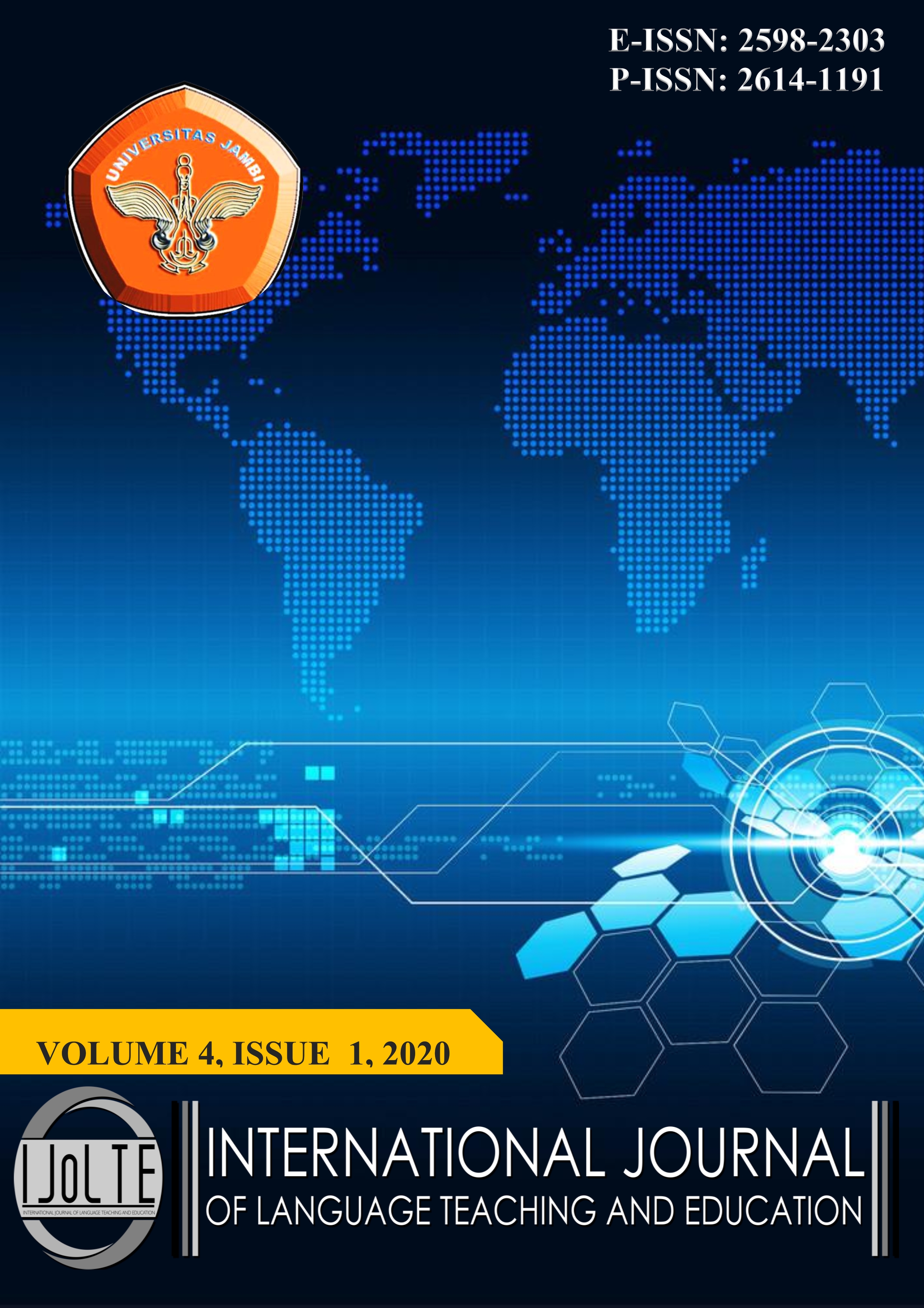EMI in Vietnam: What High School Teachers Think and Do
DOI:
https://doi.org/10.22437/ijolte.v4i1.8754Keywords:
English as a medium of instruction, high school teachers, perception, practiceAbstract
The current case study was driven by a recent policy on using English as a medium of instruction (EMI) in the mainstream school system in Vietnam. It aimed to explore what science teachers believed and reported doing about EMI in teaching science subjects in the high school context. Nine EMI teachers of different science subjects at a specialized high school in the Mekong Delta of Vietnam participated in a semi-structured interview. Thematic analysis revealed the perceived positive impacts on teachers’ and students’ English proficiency, and negative influences on science content coverage. In practice, the teachers reported a focus on simple contents, explaining specialized terminologies and key concepts as the input. They mainly employed a lecture style and teacher initiation-student response interaction, switching between English and Vietnamese during their lessons. These results imply that EMI across the curriculum has the potential to improve English proficiency of students, but the EMI policy needs to consider its transparency in goals and communication to stakeholders especially teachers and school managers.
Downloads
Downloads
Published
How to Cite
Issue
Section
License
The Authors submitting a manuscript do so on the understanding that if accepted for publication, copyright of the article shall be assigned to International Journal of Language Teaching and Education (IJoLTe) and Magister Program of English Education Department, Universitas Jambi as publisher of the journal. Copyright encompasses rights to reproduce and deliver the article in all form and media, including reprints, photographs, microfilms, and any other similar reproductions, as well as translations.
IJoLTe keep the rights to articles that have been published. And, the authors are permitted to disseminate published article by sharing the link of IJoLTe' website. Authors are allowed to use their works for any purposes deemed necessary without written permission from IJoLTe with an acknowledgement of initial publication in this journal.
IJoLTe and Magister Program of English Education Department, Universitas Jambi, and the Editors make every effort to ensure that no wrong or misleading data, opinions or statements be published in the journal. In any way, the contents of the articles and advertisements published in IJoLTe are the sole and responsibility of their respective authors and advertisers.
If the article was jointly prepared by more than one author, any authors who submitting the manuscript warrants that he/she has been authorized by all co-authors to be agreed on this copyright and license notice (agreement) on their behalf, and agrees to inform his/her co-authors of the terms of this policy. IJoLTe will not be held liable for anything that may arise due to the author(s) internal dispute. IJoLTe will only communicate with the corresponding author.
By submitting the article/manuscript to this journal, the authors agree with this policy and consciously agree that IJoLTe does not provide royalties or other fees to the authors for their published articles. By agreeing this policy, IJoLTe ensures that published articles are publicly accessible and will be free of charge for the readers. No specific document sign-off is required.
Users of this website will be licensed to use materials from this website following the Creative Commons Attribution 4.0 International License. Please use the materials accordingly
You are free to:
- Share — copy and redistribute the material in any medium or format
- Adapt — remix, transform, and build upon the material for any purpose, even commercially.
- The licensor cannot revoke these freedoms as long as you follow the license terms.





.png)











